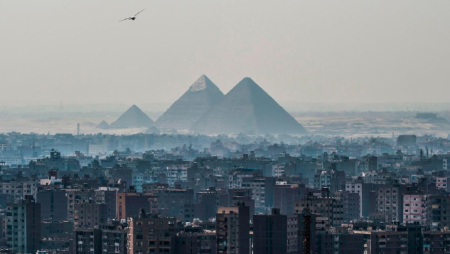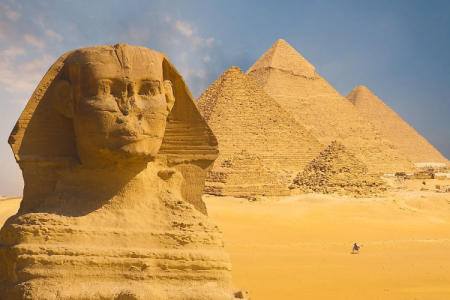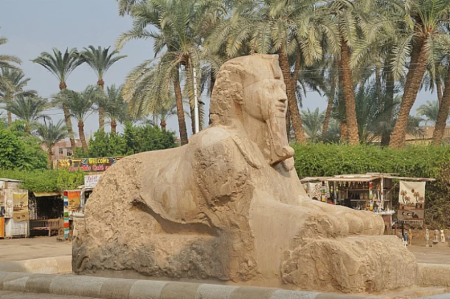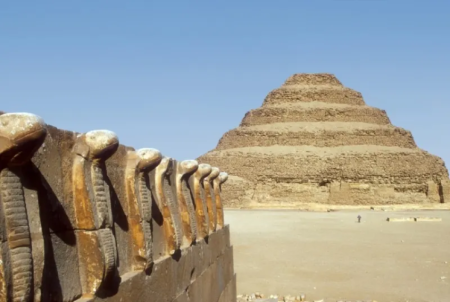Papyrus Museum

Unveiling the Wonders of the Papyrus Museum: A Journey Through Egypt’s Ancient Writing Legacy
Hidden in the heart of Cairo city lies the mesmerizing Papyrus Museum, a cultural sanctuary that takes visitors on a spellbinding journey through Egypt’s ancient art of writing. The museum stands as a tribute to one of humankind’s earliest and most revolutionary inventions—the papyrus plant. More than just a display of artifacts, the Papyrus Museum is a living museum that brings the written word of the Pharaohs to life. Here, centuries of Egyptian innovation, artistry, and cultural sophistication unfold through delicate sheets of papyrus that once recorded the language of gods and kings.
Stepping into the Papyrus Museum is like entering a portal to the past. The earthy scent of papyrus fills the air, and the walls whisper stories of pharaohs, priests, and scribes who once immortalized their ideas on this ancient medium. The museum doesn’t merely exhibit papyrus scrolls—it tells a story of civilization, communication, and creativity. Visitors can witness live demonstrations of how genuine papyrus is made, touch authentic pieces, and even purchase beautifully crafted artworks inspired by ancient Egyptian themes. For travelers exploring Cairo Day Tours, the Papyrus Museum is a must-see destination that vividly captures Egypt’s enduring spirit of storytelling and invention.
The Historical Roots of Papyrus: Birth of Civilization’s First Paper
The history of papyrus stretches deep into the fertile lands along the Nile River, where the papyrus reed once grew in abundance. Ancient Egyptians recognized the plant’s potential early on, ingeniously transforming it into sheets used for writing, documenting trade, religious texts, and royal decrees. The word ‘paper’ itself derives from ‘papyrus,’ underlining its monumental role in global communication. The Papyrus Museum captures this legacy through interactive displays and preserved artifacts that highlight how this humble reed laid the foundation for the written word as we know it today.
Each exhibit tells of how Egyptian scribes mastered the technique—cutting, pressing, and drying the stalks to create a durable surface suitable for ink. These sheets became the medium of choice for recording everything from temple rituals to astronomical observations. The museum pays homage to the artisans who perfected papyrus-making, offering demonstrations that allow visitors to see firsthand how ancient craftsmanship continues to thrive in modern Egypt. For those curious about the evolution of Egyptian art, the museum serves as a perfect complement to a visit to the Egyptian Museum of Cairo.
Inside the Papyrus Museum: A Fusion of Art, History, and Craftsmanship
Inside the Papyrus Museum, every corner radiates the charm of ancient Egyptian artistry. Walls are adorned with hand-painted papyrus scrolls depicting gods, pharaohs, and scenes from the Book of the Dead. Visitors can admire intricate reproductions of famous relics, including portrayals of Tutankhamun, Isis, and Osiris, which reflect the divine narratives that once shaped the Egyptian worldview. The museum also showcases detailed hieroglyphic inscriptions, offering both educational and aesthetic value to those fascinated by the world’s oldest writing system.
What makes the Papyrus Museum truly special is its dedication to authenticity. Unlike many souvenir shops offering synthetic papyrus, this museum guarantees genuine material crafted using traditional methods passed down through generations. The fine texture, flexibility, and earthy hue of authentic papyrus distinguish it from imitations. Exhibitors often demonstrate the entire process—from soaking the stalks to arranging them into sheets—making the experience both informative and engaging. It’s a lively reenactment of millennia-old traditions, drawing parallels between ancient scribes and modern artisans. Visitors planning comprehensive Egypt travel packages should definitely include this cultural gem.
The Artistic Representations: From Mythology to Modern Interpretations
Art on papyrus is more than decorative; it’s symbolic. The Papyrus Museum’s collection reflects Egypt’s mythological, religious, and daily life scenes, each painting bursting with color and meaning. Vibrant blues, deep golds, and fiery reds breathe life into deities like Horus, Anubis, and Hathor. Many artworks also reinterpret ancient imagery in modern contexts, blending tradition with contemporary aesthetics. Each handcrafted piece is a testament to Egypt’s timeless artistic continuity and a reflection of the deep respect artists hold for their ancestors’ vision.
For travelers fascinated by Egypt’s artistic heritage, visiting the museum offers an intimate understanding of how art and spirituality intertwine. Much like the grand scenes at Karnak Temple or the murals in the Valley of the Kings, the papyrus paintings capture the essence of eternity, ensuring the divine stories remain alive for generations to come.
Educational Value: Learning Through Living History
The Papyrus Museum isn’t just a display space—it’s a living classroom. Students, historians, and curious travelers can learn about ancient Egyptian writing systems, the evolution of papyrus production, and its impact on global communication. The museum often hosts workshops where visitors can try their hand at papyrus-making or write their names using authentic hieroglyphics. Each activity is designed to spark curiosity and deepen appreciation for Egypt’s intellectual and cultural legacy.
Moreover, the museum complements other cultural landmarks such as the National Museum of Egyptian Civilization and Khan al-Khalili Cairo, creating a holistic experience for those exploring Egypt’s artistic soul. With guided tours and multilingual exhibits, the Papyrus Museum ensures every visitor walks away with a deeper understanding of the pivotal role papyrus played in shaping human knowledge.
Buying Authentic Papyrus Art: A Souvenir That Tells a Story
No visit to the Papyrus Museum is complete without browsing through its gallery store. Here, visitors can purchase genuine papyrus artworks—each one a masterpiece. Whether it’s a depiction of the weighing of the heart, the Eye of Horus, or the royal family of Akhenaten, each piece carries symbolic meaning and aesthetic beauty. Skilled artisans explain the stories behind each design, ensuring travelers leave with not just a souvenir but a fragment of Egypt’s eternal narrative.
Authentic papyrus art serves as a beautiful gift or home décor piece, bridging ancient culture with modern life. Collectors often compare this experience to acquiring treasures from the Library of Alexandria or discovering relics at The Grand Egyptian Museum. Each artwork embodies the spirit of Egyptian genius—creative, symbolic, and everlasting.
Why the Papyrus Museum Should Be on Every Traveler’s Itinerary
For travelers captivated by Egypt’s ancient wonders, the Papyrus Museum offers a distinct perspective beyond the colossal monuments and temples. It highlights the intellectual brilliance that accompanied architectural grandeur. The museum blends education, entertainment, and artistry, making it suitable for families, history enthusiasts, and art collectors alike. It’s more than a cultural stop—it’s an immersive encounter with the pulse of Egyptian civilization.
Whether you’re sailing on one of the scenic Egypt Nile Cruises or exploring Luxor and Aswan, a visit to the Papyrus Museum in Cairo completes your journey through Egypt’s glorious past. It reminds visitors that history isn’t confined to stone—it’s also written on paper, preserved through time by the ingenuity of ancient minds.
Frequently Asked Questions About the Papyrus Museum
Where is the Papyrus Museum located?
The Papyrus Museum is located in Giza, near central Cairo, making it easily accessible from major tourist attractions like the Great Pyramids of Giza. It’s often included in guided tours and day trips that explore both the city’s modern vibrancy and its ancient heritage.
What can I see inside the Papyrus Museum?
Visitors can explore authentic papyrus exhibits, watch live demonstrations of traditional papyrus-making, and admire colorful artworks depicting ancient gods, hieroglyphs, and royal scenes. The museum also includes a shop where travelers can buy original pieces made by skilled Egyptian artisans.
Is the papyrus sold in the museum authentic?
Yes, all papyrus displayed and sold at the museum is genuine. Artisans use the same techniques perfected thousands of years ago. They carefully explain the process so visitors can distinguish authentic papyrus from imitations sold elsewhere.
Can I participate in workshops at the Papyrus Museum?
Absolutely. The museum often hosts interactive workshops where visitors learn to make papyrus sheets and write their names in hieroglyphics. It’s a fun, educational activity suitable for all ages, offering a hands-on connection to Egypt’s cultural roots.
When is the best time to visit the Papyrus Museum?
The museum welcomes visitors all year round. However, the best time to visit is in the cooler months between October and April, when the weather is pleasant for combining your museum visit with other attractions like the Abdeen Palace or Al Azhar Park.
Visiting the Papyrus Museum is a profound reminder that Egypt’s legacy isn’t just carved in stone—it’s also written on reeds, preserving the heartbeat of civilization for eternity. Every scroll, every brushstroke, and every story etched on papyrus connects us to the timeless soul of Egypt. For travelers eager to uncover the deeper layers of history, the Papyrus Museum is not merely a stop—it’s a revelation.











